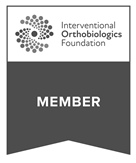Precision in movement is essential during the convalescence and rehabilitation of musculoskeletal injuries. The goal of rehab is to optimize skills performance while diminishing wear and tear on joints and tendons. In the past it was difficult to measure the efficiency of motion during complex movement patterns for each individual patient. Today, technology is changing the way we assess and train our patients by providing quantifiable metrics and real-time feedback to map our patients’ progress.
Proteus features patented 3D multi-planar resistance, for consistent resistance through the entire range of motion. Users are prompted by external cueing to perform movement in ways that distribute loads evenly throughout the body, so that the user can “feel” the movement, almost like moving through water. Proteus motion enhances force production and motor sequencing, for optimal skills execution.
Proteus uses consistent low-impact resistance to help athletes develop and analyze strength and power, for more productive training sessions. Quantitative analysis of strength helps coaches make informed training decisions that lead to optimal performance. Rather than a one-size-fits-all approach to training, Proteus facilitates individualized programming for each athlete.


Proteus takes training to a new level, offering multiple advantages over traditional resistance training:
Precision in movement is key to peak performance in any sport, optimizing skills performance while diminishing wear and tear on the athlete’s body. In the past it was difficult to measure the efficiency of motion for each individual athlete. But today’s technologies are changing the way we assess and train athletes, providing quantifiable metrics and real time feedback to map the athlete’s progress.
Dr. Kalika is currently a certified member of:
American Institute of Ultrasound Medicine

Active member of ISMST
International Society of Extra Corporeal Shockwave Therapy
Active member of GCMAS
Gait and Clinical Movement Analysis Society
Active member of NASS
North American Spine Society
Active member of IADMS
International Association of Dance Medicine and Science
Active member of Virtual Rehabilitation Society
Active member of ASRA
American Society of Regional Anesthesia and Pain Medicine
American Academy
Association of Orthopedic Medicine

Active member of Interventional Orthobiologics Foundation
Dr. Lev Kalika is a world-recognized expert in musculoskeletal medicine. with 20+ years of clinical experience in diagnostic musculoskeletal ultrasonography, rehabilitative sports medicine and conservative orthopedics. In addition to operating his clinical practice in Manhattan, he regularly publishes peer-reviewed research on ultrasound-guided therapies and procedures. He serves as a peer reviewer for Springer Nature.
Dr. Kalika is an esteemed member of multiple professional organizations, including: